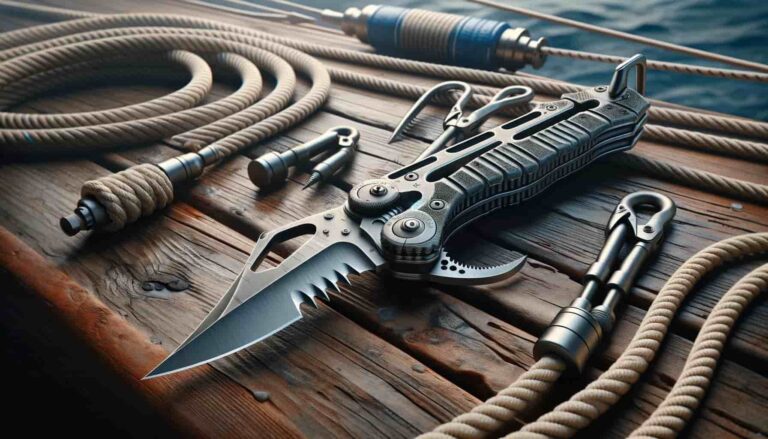How To Sail A Hobie Cat
So you’ve got yourself a Hobie Cat and you’re itching to hit the open waters and feel the wind in your hair. But how exactly do you sail this sleek, maneuverable catamaran? Fear not, because in this article, we’ll guide you through the basics of sailing a Hobie Cat, from rigging the boat to catching the perfect wind. Whether you’re a seasoned sailor or a complete newbie, by the end of this article, you’ll be ready to set sail and embark on an unforgettable adventure.
Understanding the Hobie Cat
The Hobie Cat is a popular catamaran sailboat that has a rich history and distinct features. Whether you are a beginner or an experienced sailor, understanding the Hobie Cat and its various aspects is essential for a successful and enjoyable sailing experience. In this article, we will delve into the history of the Hobie Cat, examine its distinguishing features, explore the different types of Hobie Cats and their specifications, and provide you with a comprehensive guide to prepare for and sail your Hobie Cat effectively.
History of the Hobie Cat
The history of the Hobie Cat dates back to the 1960s when Hobie Alter, a renowned surfboard shaper and sailor, sought to create a sailboat that was both fun and easy to sail. Inspired by Polynesian outrigger canoes, Hobie designed the first Hobie Cat, also known as the Hobie 14. This innovative catamaran sailboat quickly gained popularity due to its simplicity, affordability, and thrilling performance.
As time passed, Hobie continued to refine his designs, introducing new models and incorporating advancements in sailing technology. The Hobie Cat soon became synonymous with beach sailing and recreational racing, attracting a large and dedicated community of sailors around the world.
Distinguishing features of the Hobie Cat
One of the distinguishing features of the Hobie Cat is its catamaran design. Unlike traditional monohull sailboats, the Hobie Cat consists of two parallel hulls connected by a trampoline-like deck. This design provides stability, speed, and the ability to sail in shallow waters without grounding.
The Hobie Cat also features a rotating mast, which allows the sail to be easily adjusted to harness the power of the wind. This feature enhances maneuverability and control, making it suitable for sailors of all skill levels.
Additionally, the Hobie Cat incorporates a unique righting system. In the event of a capsize, the sailor can use the trampoline and their body weight to right the boat, making it possible to continue sailing without assistance.
Types of Hobie Cats and their specifications
Hobie offers a range of catamaran sailboat models, each with its own specifications and intended use. The most popular models include the Hobie 16, Hobie 18, and Hobie Getaway.
The Hobie 16 is a two-person boat that is widely regarded as the classic Hobie Cat. With a length of 16 feet and a sail area of 218 square feet, it offers a thrilling sailing experience for both beginners and experienced sailors. The Hobie 16 is known for its speed, agility, and suitability for racing.
For those seeking a larger and more powerful catamaran, the Hobie 18 is an excellent choice. With a length of 18 feet and a sail area of 248 square feet, the Hobie 18 is designed for more experienced sailors who crave high performance and exhilaration on the water.
If you prefer a simpler and more family-friendly sailing experience, the Hobie Getaway is an ideal option. With room for up to six people, a 113 square feet sail area, and a durable rotomolded polyethylene hull, the Hobie Getaway offers stability, comfort, and ease of use.
Understanding the differences between the various Hobie Cat models and their specifications is crucial in choosing the right boat for your sailing needs.
Preparing for Your Sail
Before embarking on your Hobie Cat sailing adventure, it is essential to adequately prepare yourself and your boat. This section will guide you through the necessary preparations, including checking weather conditions, dressing appropriately for sailing, ensuring safety precautions, and understanding water laws and regulations.
Checking weather conditions
Before heading out onto the water, it is crucial to check the weather conditions. Always consult a reliable weather forecast and pay attention to factors such as wind speed, wave height, and potential storms. Sailing in unfavorable weather conditions can be dangerous, so it is important to postpone your sail if necessary.
Dressing appropriately for sailing
When it comes to dressing for sailing, comfort and safety are key. Wear lightweight, moisture-wicking clothing that allows freedom of movement. Consider wearing a wetsuit or a drysuit if the water temperature is cold. Remember to wear a life jacket at all times, as safety should never be compromised.
Safety precautions while sailing
While sailing, it is imperative to prioritize safety. Familiarize yourself with basic safety protocols, such as knowing how to swim, and ensure that all necessary safety equipment, such as life jackets, flares, and a first-aid kit, are on board. It is also recommended to sail with a buddy or inform someone on land about your sailing plans.
Navigating the water laws and regulations
Before setting sail, educate yourself on the water laws and regulations in your area. Each location may have specific rules regarding speed limits, right of way, and restricted areas. Adhering to these regulations not only ensures your safety but also promotes responsible sailing.

Familiarizing with Hobie Cat Parts
To become a proficient Hobie Cat sailor, it is essential to have a solid understanding of the different parts that make up the boat. This section will introduce you to the structure of the Hobie Cat, explain the functionalities of various components, and provide tips for maintaining optimal performance.
Introduction to the Hobie Cat structure
The Hobie Cat’s structure consists of several key components, including the hulls, trampoline, mast, sails, rudders, and daggerboards. The hulls provide buoyancy and stability, while the trampoline serves as a platform for sitting, hiking out, or lounging. The mast supports the sail and allows for easy adjustment, while the rudders control the direction of the boat. The daggerboards, which can be raised or lowered, help maximize stability and minimize leeway.
Functionalities of various Hobie Cat components
Each component of the Hobie Cat serves a specific function that contributes to the boat’s performance. The sails capture the wind’s energy to propel the boat forward, while the rudders enable steering and maneuverability. The daggerboards help maintain stability and control, especially in strong winds or against currents. The trampoline provides a comfortable seating area and a surface for bodyweight transfer during righting maneuvers.
Maintaining the performance of a Hobie Cat
To ensure the optimal performance and longevity of your Hobie Cat, regular maintenance is essential. This includes inspecting the hulls for any cracks or damage, ensuring the trampoline is secure and free from tears, and checking that the mast, sails, rudders, and daggerboards are in good working condition. Clean and lubricate moving parts as necessary, and store the boat in a proper location to prevent deterioration.
Rigging Your Hobie Cat
Properly rigging your Hobie Cat is a crucial step before launching it into the water. This section will guide you through the process of unfolding and setting up the mast, attaching and raising the sail, connecting the rudders, and conducting inspections before launching.
Unfolding and setting up the mast
To unfold and set up the mast, first, ensure that the mast base is securely fastened to the boat’s crossbar. Release any securing ropes or bungee cords and carefully lift the mast vertically, allowing it to rotate if necessary. Once in an upright position, secure the mast using the mast rotator and ensure that all connectors and hardware are firmly tightened.
Attaching and raising the sail
After setting up the mast, it’s time to attach and raise the sail. Begin by attaching the tack (bottom) of the sail to the mast base and the head (top) to the upper part of the mast. Secure the sail using the halyard, ensuring that it is taut but not overly tight. Raise the sail by pulling the halyard, using a controlled motion to avoid sudden jerks or snags.
Connecting the rudders
Properly connecting the rudders is vital for steering control. Slide the rudder blades into their respective casings, ensuring they are securely fitted. Connect the rudder handles to the tiller crossbar, double-checking that the connections are tight and secure. Test the rudder movements to ensure they are functioning correctly and verify that the kick-up mechanisms are released, allowing the rudders to operate freely.
Inspections before launching
Before launching your Hobie Cat, conduct thorough inspections to ensure everything is in order. Check the tightness of all fittings and fastenings, inspect the integrity of the trampoline and hulls, ensure the sail is properly rigged and tensioned, and verify that the rudder and daggerboard movements are smooth and unrestricted. Address any issues or concerns and make necessary adjustments or repairs before proceeding.

Launching the Hobie Cat
Launching your Hobie Cat into the water requires careful preparation and execution. This section will provide guidance on choosing the right launching spot, securing the boat before launch, employing proper techniques to enter the water, and troubleshooting common launching issues.
Choosing the right launching spot
When selecting a launching spot, consider the depth and conditions of the water. Look for areas with sufficient depth to avoid grounding the boat or damaging the rudders and daggerboards. Be mindful of any potential hazards or obstacles, such as rocks, strong currents, or boat traffic. Additionally, check if there are any local regulations or designated areas for launching sailboats.
Securing the Hobie Cat before launch
Before entering the water, it is crucial to secure the Hobie Cat properly. Ensure that the mast is clear of any obstructions, especially power lines or tree branches. Attach a bow line to a secure point on land or use an anchor to prevent the boat from drifting away. Make sure that all sails, lines, and rigging are in their proper positions and are free from snags or tangles.
Proper techniques for launching into the water
To launch the Hobie Cat, work together with a partner if possible. Position yourselves on either side of the boat and gently slide it into the water, maintaining control and balance. If the water is shallow, be mindful of the rudders and daggerboards to avoid damage. Once in the water, quickly move away from the shore, ensuring a safe distance from any potential hazards.
Troubleshooting common launching issues
Launching a Hobie Cat may encounter certain challenges. If the boat is difficult to move, check if the rudders or daggerboards are partially raised and ensnared on the beach or rocks. Adjust them as needed and try again. If the boat does not slide smoothly into the water, ensure proper weight distribution and alignment with the wind direction. Address any issues promptly and make necessary adjustments to ensure a successful launch.
The article continues in the comment below due to length restrictions.








